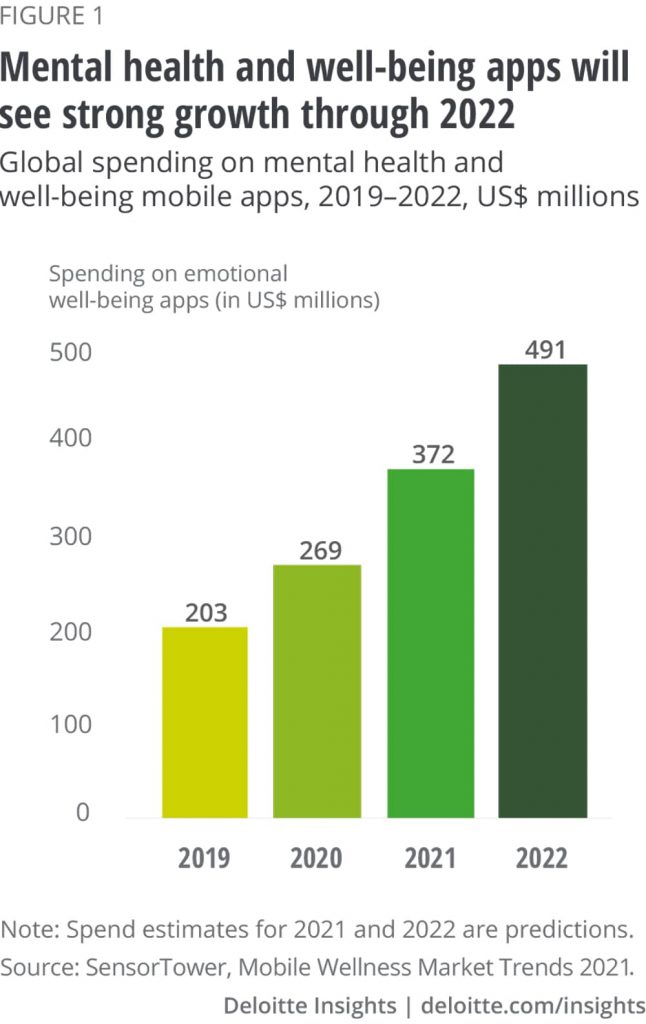The Therapy App Fantasy
Curious what experts say?
My dear Ladies,
With the onset of the pandemic, an overwhelming demand for counselling has fuelled a therapy-app bonanza.
The question however is, can therapy apps really provide the service they promise? Let´s take a closer look!
What exactly are therapy-apps
The industry claims to close the gap between demand and supply where mental health care is concerned. Their USP is mental-health care via smartphone or tablet, 24/7 therapy at a fraction of the cost a therapist would charge.
Therapy apps are a kind of “therapy to go”. Cleverly marketed companies promise solutions for managing mental health issues such as anxiety, depression or PTSD.
Individuals can choose between apps for self-therapy or apps that offer self-help programs in conjunction with more traditional talking therapies.
The general idea is to enable individuals to learn about and self-manage their mental health.
Beyond supporting individuals with mental health diagnoses, some therapy apps aim at improving general well-being.
The challenge
Data shows that the COVID-19 pandemic has exacerbated mental health concerns. As a result, problems such as depression, anxiety, post-traumatic stress symptoms, and general stress recorded a dramatic rise.
People seeking therapy have to face many challenges, even at the best of times. Data shows there are far more people seeking therapy than there are therapists available.
Low-income countries or rural areas are hardest hit by the unequal distribution of therapists.
“We’ve been in a crisis of access to mental health care really since mental-health care is professionalized,” said Hannah Zeavin, a professor at UC Berkeley.
To add to the list of challenges, low social acceptance of mental health issues is still a prevailing issue in some countries and communities. At the same time, the number of people looking for help is growing.
In many Asian and Arab countries, human and financial resources for professional mental health treatment are still low. The reason is often a deeply rooted stigma around mental health conditions.

Investor‘s opportunities
The potential market for mental health apps is considerable. Nearly 800 million people worldwide, or 11% of the global population live with a mental health condition.
App developers took notice and jumped at the opportunity. As many as 20,000 mental health apps exist today. The outlook for the future is rosy. The growing collaboration with other online services and apps will make online therapy even more accessible.
Prepandemic estimates suggest that poor mental health costs the world economy US$2.5 trillion per year. This cost was projected to increase to US$6 trillion by 2030. It is obvious, the opportunity is all there and app creators are set to make a fortune.
Therapy apps have become a serious growth sector. In 2021, “digital behavioural health” raised $1.8 billion in venture-capital funds.
Talkspace, for example, founded in 2012, went public in 2021 with a $ 1.4 Billion SPAC deal.
While most countries allocate only a modest share of their government health budgets to mental health care, opportunities exist for app creators and corporations alike to step in.

Effect vs. fantasy
The primary job of a therapist is to notice what we fail to see. They can tell us if things said or behavioural patterns shown are a cause for alarm. Most importantly they will work with us to find the right coping mechanisms.
However, we have to clarify what we define as the therapeutic effect. Is going to a particular place at a particular time considered therapeutic? Or, is having a good chat about something you would not dare tell anybody else therapy?
Firstly, for the majority escaping an overwhelming situation even if only for an hour is a benefit in itself. Secondly, being in a shame and blame-free place and sharing a problem with someone delivers yet another desired effect. Even if nobody doubts the benefit, it is doubtful if this can be called therapy.
Suitability
Further, it is important to distinguish between temporary mental stress, a mood change or a mental health illness. Apps are usually fine for those suffering from mental stress situations or a mood change. But, are definitely highly unsuitable for people suffering from a serious mental health illness.
Few mental stress situations least of all mood swings need prescription medication.
Offering online therapy with a prescription service by a psychiatrist should therefore be questioned and considered as not safe.
Better than nothing
Prior to the pandemic, remote therapy, like speaking to a therapist by video or phone, tended to be seen as a better than nothing solution.
Text messaging was not considered a viable form of therapy. It was considered a solution for limited situations.
With the onset of pandemic restrictions, all therapy went remote. From then on, a video session was their only choice and better than nothing.
If a “better than nothing” solution can be considered a substitute for in situ therapy should be seriously questioned and remains to be seen.
The Manual
Using a therapy app is straightforward. After signing up, a consulting therapist chats with the customer to find out what kind of therapy they require. Other apps use quizzes to assess a customer’s needs via AI.
Based on the chat or the quiz viable treatments, applications and therapists are suggested. Some apps offer a quick video session or call with a choice of therapists, to ensure that the suggested therapy and matched therapist actually work.
It is up to the client to choose the preferred way of communication and the desired commitment. Options are either chats with the customer, whereby the customer is able to send the therapist as many texts as desired.
Another more traditional version is audio and video messaging with a therapist at a previously booked time. The high tech version is using bots as a way of communication.
Top Mental Health Apps
| Talkspace | https://www.talkspace.com/ | English& 32 different languages |
| Betterhelp | https://www.betterhelp.com/about/ | English |
| Sanvello | https://www.sanvello.com/therapy/ | English & text translation in Spanish and French |
| YANA | https://yanahelps.com/why-yana/ | English & Spanish |
| Alanmind | https://mind.alan.com/ | English & French |
| MoodMission | https://moodmission.com/ | English |
| Awarefy | https://www.awarefy.app/ | English& Japanese |
| Ginger | https://www.ginger.com/care | English& Spanish & text translation in Spanish, French, German, Japanese |
| Flow | https://flowneuroscience.com/home/ | English& Swedish |
| Manshta | https://www.manastha.com/services/ | English/Indian based |
| Ayadi | https://ayadihealth.co/ | English&Arabic |
Commerce and psychotherapy
The tides of commerce are not new to the realm of mental health. In fact, the blurriness of categories like “wellness” and “self-care” recalls the 19th century. A time before psychotherapy had professionalized.
In the industrialized world, many turned to a diverse marketplace to treat their nebulous ills with tonics, phrenology, and rest cures. Then as now, clever businessmen took up the opportunity and mental-wellbeing became a multimillion business.
By the beginning of the 20th century, the medical profession did its best to run the less credentialed out of the marketplace. Psychoanalysis became the gold standard of expertise.
By the end of the century, rival schools had emerged, for instance, cognitive behavioural therapy(CBT).
From then onwards, the goal was shifted from understanding why you felt and thought to what you can do to stop those thoughts and feelings from disrupting your life. Instead of a narrative, CBT produced data.
Data lent itself to clinical trials and scientific legitimacy. This in turn appealed to insurance companies. Shortened therapy cycles were the result and considered an added bonus by health insurers. Therapies that had previously taken years were shortened to several months.
The British writer and psychoanalyst Adam Phillips reflected on this shift. Psychotherapy, he points out, emerges just as “traditional societies begin to break down and consumer capitalism begins to take hold.”
Pros
Cons
Key takeaway
Mental health care providers might leverage apps to improve care quality and accessibility. They could certainly make treatment available to broader populations. Moreover making mental health care and well-being easier to manage for millions of consumers.
For investors, certainly a market worth looking into as the need for help with mental – well being is growing and AI will offer new opportunities.






